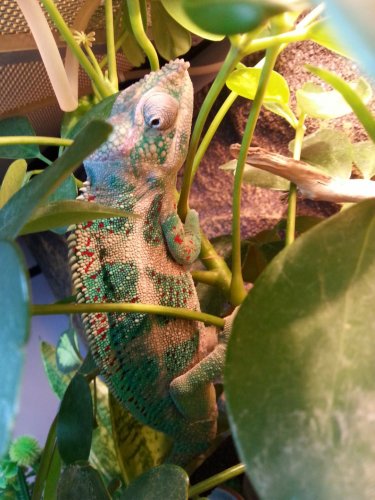haleyallanah
New Member
Hey guys. I'm hoping you can help me out. My chameleon hasn't been eating lately. I've had him for just over a year, he seems to be drinking normally and he's not showing any other strange behavior. But I don't think he's eaten anything at all in three or four days.


